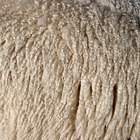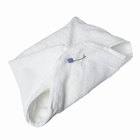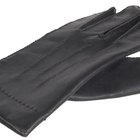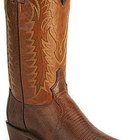
Dejtan05/iStock/Getty Images
Extremely soft and insulating, deer leather has for decades been used for clothing, shoes and even shelter. Despite the rather difficult and time-consuming process of producing the material, a finished deer hide is one of the softest, warmest and most durable leathers.
Look and Feel
Deerskin is strong, yet one of the softest leathers available. The hide generally has about a half-inch of fur on one side, and the underside of the skin feels similar to a soft suede. Deer skin has elongated interwoven fibers that make it strong and resistant to tears or abrasion. The spaces between its fibers make it soft and comfortable when used over a wide range of temperatures. This means that deerskin stays cool in warm weather and warm in cold weather.
Uses
There are a wide variety of uses for deerskin leather. In particular, deerskin leather produces strong, soft, comfortable gloves. This is in part because it stretches slightly and molds to your skin. This quality also makes it also a superior choice for shoes. Deerskin leather is often cut into thin cords to lace shoes or string beads for craft items, including jewelry. The leather has been used for handbags, jacket, and coats, and it's also used in martial arts protective gear. Cleaning cloths made from deerskin are used to polish fragile objects, such as optical equipment, that benefit from the soft surface.
Issues With Deerskin
There are a few downsides to deerskin leather. In products with the hair still attached, such as a jacket, the hair can sometimes fall out or "molt." Deer hide that still has its hair is less common in apparel and more frequently seen in products such as bedding, rugs, or decorative taxidermy. Although deerskin leather is sturdy, its suppleness and breathability make it susceptible to collecting dirt over time. Oils from the skin can build up over time in apparel products.
Caring for Deerskin
Fortunately, deerskin is fairly easy to care for. Use baby powder or cornstarch to remove grease or oil, but don't rub the powder into the leather, as this can work the grease or oil further in. You can use a soft brush to remove the excess powder. Any stains or spots on deerskin leather are best cleaned with a damp cloth. The naked, unfinished nature of deerskin is what makes it very soft, but the leather without its fur is not naturally water- or stain-resistant. To remedy this, you can use one of a number of sealants and wax-based waterproofing products on the market to coat your leather and preserve it.
Costs and Alternatives
Products made from deerskin leather are usually of high quality but hard to find because deerskin is difficult to work with and the production process involves a highly complex tanning procedure. This has kept the material out of mass production and kept the cost of deer skin high. Cowhide is the most common affordable alternative to deerskin, as it is much easier to produce, since the tanning process requires fewer steps. If you enjoy the luxuriously soft feel of deerskin, you may be able to find some high-quality cowhide suede leather that comes close to the softness and supple texture of deerskin at a much more reasonable price. Or you may be able to find a second-hand deerskin jacket in a vintage clothing shop that won't break the bank.
Related Articles

Sheepskin Vs. Deerskin

Lambskin vs. Cowhide

Difference Between Suede & Microfiber

Cordura Vs. Leather

Difference Between Sheepskin & Shearling

The Properties of Suede Finished ...

Microfleece Vs. Microplush

How to Beeswax Leather

Characteristics of Lambskin Leather

How to Use Kiwi Mink Oil to Waterproof ...

How to Identify Calfskin Leather

The Different Fabrics of Raincoats and ...

What Is Berber Fleece?

How to Clean Lizard Skin Boots

Fabrics That Haute Couture Designers Use

What Are Persian Lamb Coats?

Naked Leather Vs. Cowhide

How to Care for Caiman Boots

Care of Pigskin Leather

What Is Cognac Leather?
References
Writer Bio
A journalist since 2001, Claire Harlin has served as editor of several newspapers in Southern California and Austin, Texas. She has also contributed to "Us Weekly" and "San Diego Pets Magazine," and served as an art director and consultant for a monthly bilingual newspaper in San Diego.
Photo Credits
Dejtan05/iStock/Getty Images